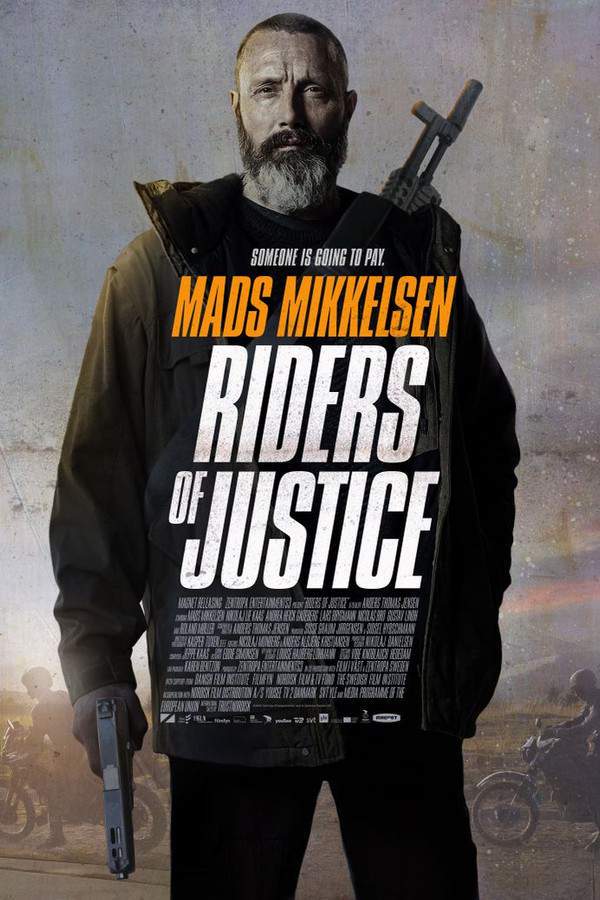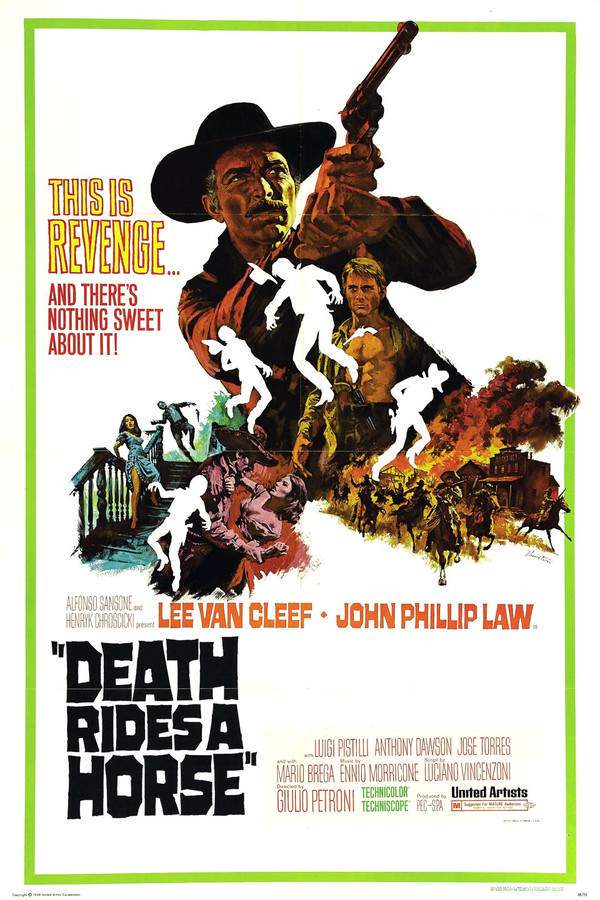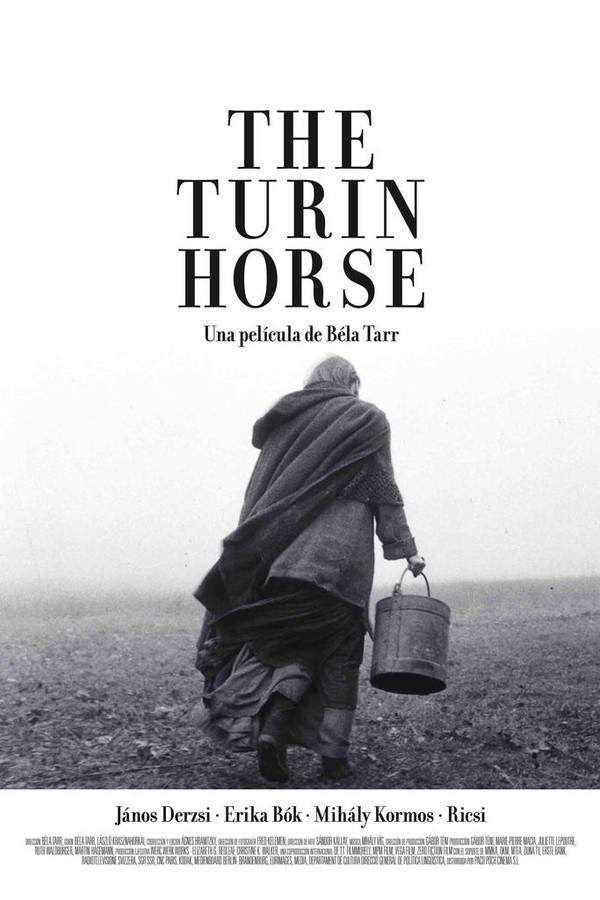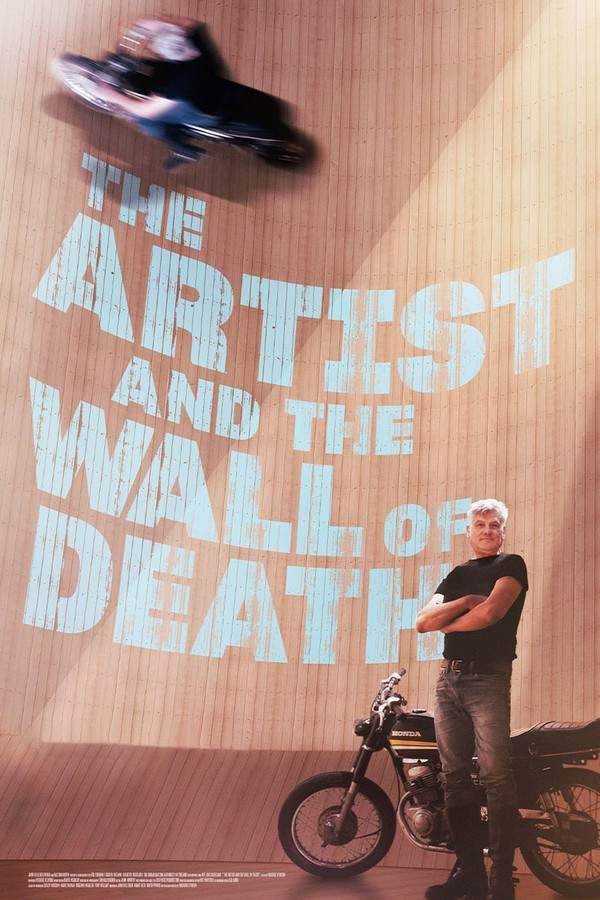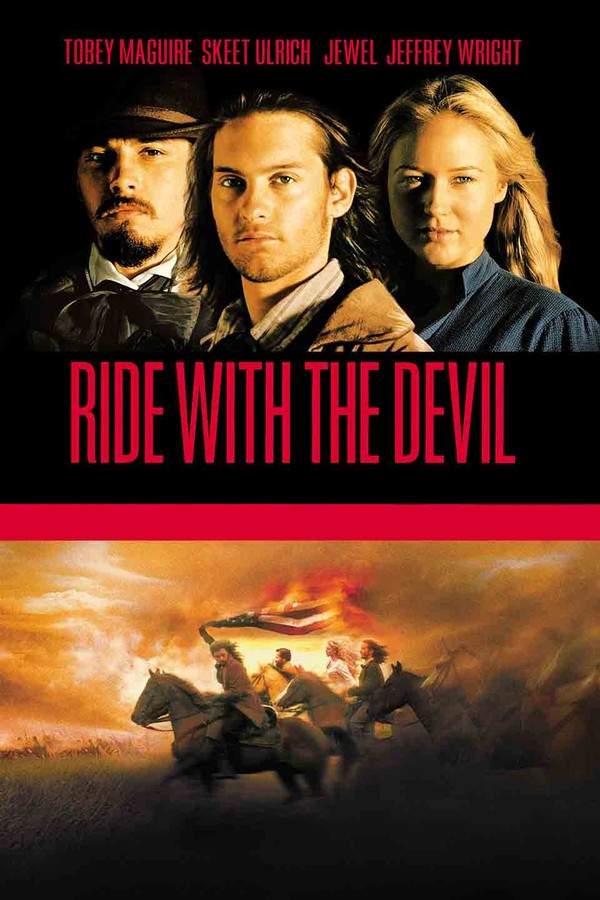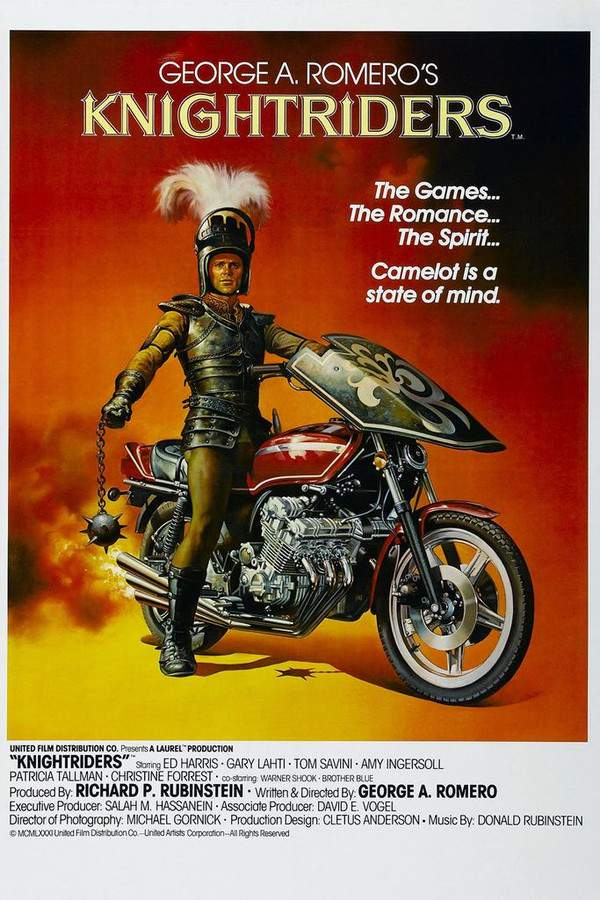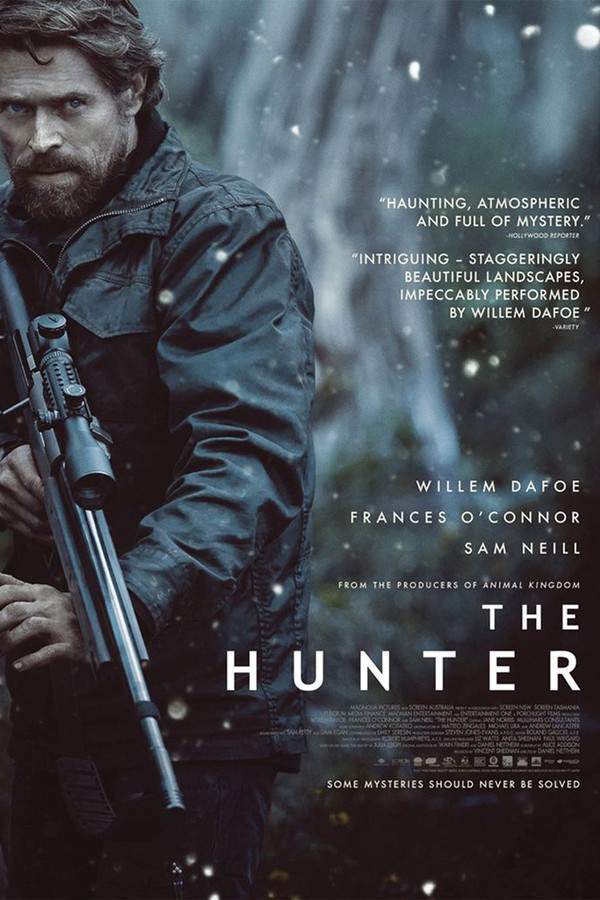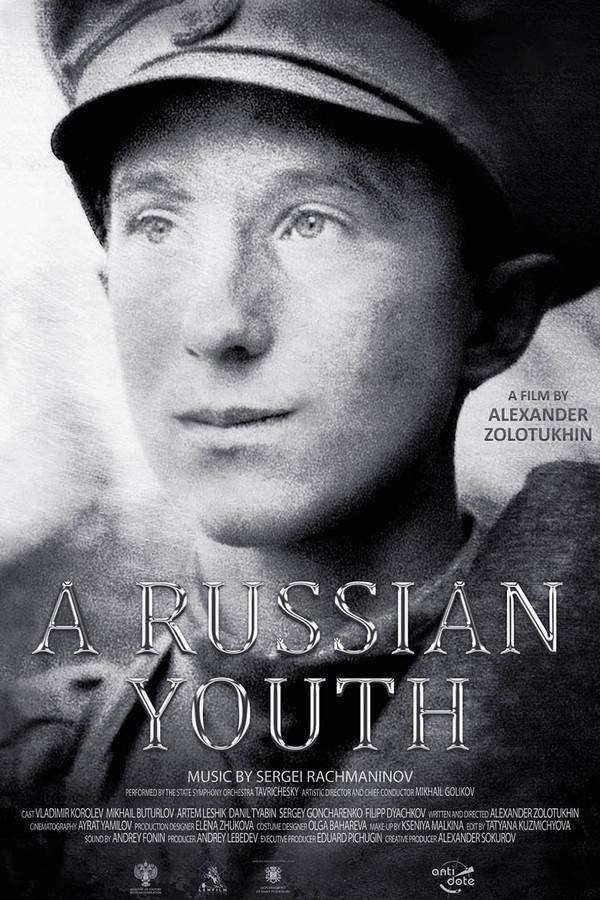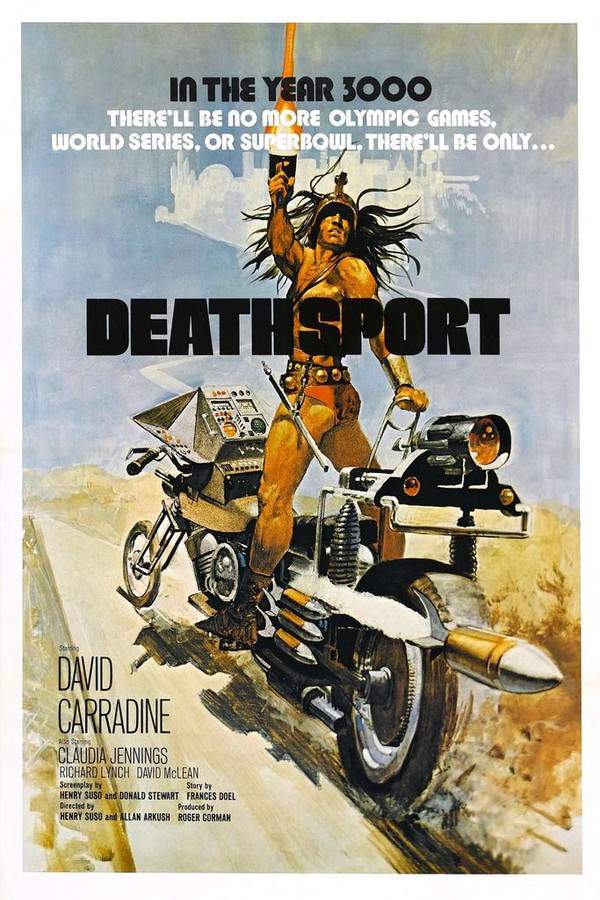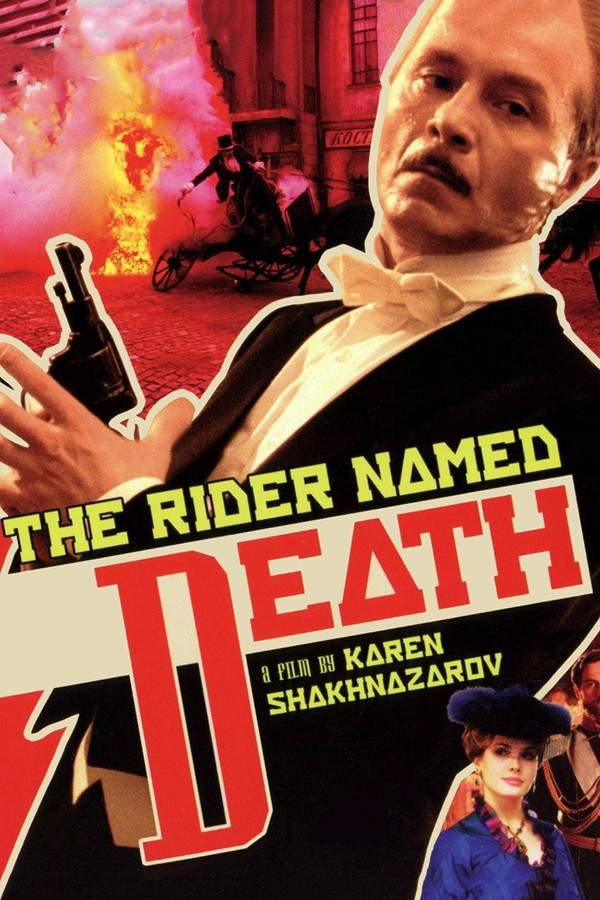
The Rider Named Death 2005
Directed by

Karen Shakhnazarov
Made by

Kino International
The Rider Named Death Plot Summary
Read the complete plot summary and ending explained for The Rider Named Death (2005). From turning points to emotional moments, uncover what really happened and why it matters.
The movie opens with a stunning woman stepping into the czar’s palace at the turn of the century in Russia, requesting permission to visit her brother who is imprisoned. However, what unfolds is unexpected; as she meets the leader, she reveals a hidden gun and shoots him dead. This act ignites a narrative on the history of revolution in Russia and its far-reaching consequences.
Leading a small faction of Russian socialists is George, portrayed by Andrei Panin, who alongside his comrades, is determined to dismantle the existing monarchy. The government, under the rule of The Grand Prince Sergei Aleksandrovich, played by Vasiliy Zotov, has endured numerous attacks from dissident socialists, marking a tumultuous political landscape.
As George reflects on the past assassination attempts and their implications, we meet Erna, the group’s bomb maker, portrayed by Kseniya Rapport. Her motivation is heightened by a cocaine addiction, and she finds herself enamored with George after their intimate encounters throughout their dangerous association.
The film also introduces Fydor, played by Rostislav Bershauer, who harbors deep resentment over the social and economic inequalities exacerbated by the revolution. Another significant character is Vanya, portrayed by Artem Semakin, who firmly believes that the chaos instigated by terrorists is essential to the revolutionary cause. Lastly, there’s the pragmatic Heinrich, brought to life by Aleksey Kazakov, who contemplates the broader implications of their revolutionary actions with a level of scholarly depth that distinguishes him from his peers.
As the group orchestrates their attempts to sabotage the government, a series of failures emerge, leading to casualties among their ranks. Amidst the turmoil, George focuses on his personal mission to topple the Grand Prince, underscoring the themes of sacrifice, ambition, and ideological conflict within the turbulent backdrop of revolutionary Russia.
The Rider Named Death Timeline
Follow the complete movie timeline of The Rider Named Death (2005) with every major event in chronological order. Great for understanding complex plots and story progression.
Introduction of the Protagonist
The movie begins with a stunning woman entering the czar's palace, setting a dramatic tone for the story. She requests permission to see her imprisoned brother, hinting at family ties and hidden intentions that will soon unfold.
The Assassination
In a shocking turn of events, the woman reveals a hidden gun and shoots the leader, dramatically altering the course of the narrative. This act of rebellion sparks a discussion about the revolutionary history in Russia and its far-reaching consequences, marking the beginning of the main conflict.
Introduction of George
George, portrayed by Andrei Panin, is introduced as a leading figure among Russian socialists. He is determined to dismantle the monarchy and grapples with the implications of previous assassination attempts as the political landscape grows more tumultuous.
The Grand Prince's Rule
The government is under the control of Grand Prince Sergei Aleksandrovich, played by Vasiliy Zotov. The political environment is rife with dissatisfaction, as numerous attacks from dissident socialists create a climate of fear and unrest.
Erna's Introduction
Erna, the group's bomb maker and portrayed by Kseniya Rapport, is introduced next. Her struggle with cocaine addiction adds complexity to her character, and her growing affection for George complicates the group's dynamics.
Emotional Attachments
The bond between George and Erna deepens as they share intimate moments amid their dangerous revolutionary activities. This emotional layer introduces personal stakes into their political struggle, showcasing the intertwining of love and rebellion.
Fydor's Resentment
Fydor, played by Rostislav Bershauer, is introduced as a character filled with resentment due to social and economic inequalities. His feelings fuel the revolutionary fervor, highlighting the personal motivations behind the broader ideological conflict.
Vanya's Beliefs
Vanya, portrayed by Artem Semakin, is a fervent believer in the chaos caused by terrorists, viewing it as essential to the revolutionary cause. His idealistic views represent the radical mindset that some members of the group embody.
Heinrich's Pragmatism
Heinrich, played by Aleksey Kazakov, is characterized by his scholarly approach to the revolution. He contemplates the broader implications of their actions, presenting a contrasting viewpoint to the more impulsive members of the group.
Attempts to Sabotage
As the group plans various sabotage attempts against the government, they encounter a series of failures. These setbacks lead to casualties within their ranks and highlight the perilous nature of their revolutionary activities.
George's Mission
Amidst the failures and growing chaos, George remains focused on his personal mission to topple the Grand Prince. His ambition underscores the film's themes of sacrifice and ideological conflict against the backdrop of revolutionary fervor.
Consequences of Revolution
The narrative continues exploring the consequences of the group's actions, revealing the devastating effects on both their personal lives and the societal landscape. The struggle between maintaining personal relationships and pursuing political goals becomes increasingly evident.
Climax of the Revolution
As the tensions escalate, the climax of the revolution looms, presenting a critical juncture for the characters. Each member must confront their ideologies and the reality of their choices, leading to significant transformations.
Reflections on Sacrifice
In the final moments, the characters reflect on the sacrifices made during their journey. The film concludes with a somber reminder of the personal and collective costs of revolution.
The Rider Named Death Characters
Explore all characters from The Rider Named Death (2005). Get detailed profiles with their roles, arcs, and key relationships explained.
George (Andrei Panin)
George is a dedicated socialist leader driven by his passion to dismantle the monarchy. His character is marked by a deep sense of purpose, yet he grapples with the sacrifices demanded by his revolutionary ambitions. As events unfold, his character's conflicts and motivations reveal the complex interplay between personal desires and political convictions.
Erna (Kseniya Rapport)
Erna serves as the group's bomb maker, characterized by her skill and turbulent emotional state due to her cocaine addiction. Her attraction to George adds layers to her character, blending vulnerability with rebellious spirit. Her struggles reflect the broader themes of personal chaos amidst revolutionary fervor.
Fydor (Rostislav Bershauer)
Fydor embodies the resentment felt by those affected by social inequality, making him a complex character fueled by his frustration. His critical view of the revolution's impact highlights the film's exploration of class struggle and systemic issues. His motivations are shaped by a desire for justice amidst suffering.
Vanya (Artem Semakin)
Vanya is a fervent believer in the necessity of chaos for revolutionary success, representing the radical elements of the movement. His unwavering convictions make him both a driving force and a potential liability within the group's dynamics. His character explores the thin line between fanaticism and ideology.
Heinrich (Aleksey Kazakov)
Heinrich stands out as a pragmatic thinker, often contemplating the philosophical implications of their revolutionary actions. His scholarly approach contrasts with the more impulsive characters, showcasing a different perspective on the struggle for change. He provides depth to the group's ideological conflicts.
The Rider Named Death Settings
Learn where and when The Rider Named Death (2005) takes place. Explore the film’s settings, era, and how they shape the narrative.
Time period
Turn of the Century
The film is set during a critical period in Russian history, characterized by widespread discontent and revolutionary fervor. This era saw the rise of socialist movements challenging the oppressive structures of the monarchy. Events unfold against a backdrop of societal upheaval, political intrigue, and the complexities of human ambition.
Location
Czar's Palace, Russia
The czar's palace serves as a significant backdrop in the film, representing the opulence and power of the monarchy at the turn of the century in Russia. It is a place where political power dynamics are palpable, with the brutal realities of revolution lurking just beneath the surface. The palace becomes a setting for pivotal events that spark a narrative of rebellion and change.
The Rider Named Death Themes
Discover the main themes in The Rider Named Death (2005). Analyze the deeper meanings, emotional layers, and social commentary behind the film.
⚔️
Revolution
Revolution is a central theme of the film, exploring the motivations and consequences of political upheaval. Characters grapple with their beliefs and the sacrifices required for change, highlighting the chaotic nature of pursuing ideals in a tumultuous society. The narrative reflects on the moral complexities and personal costs associated with revolutionary actions.
💔
Sacrifice
Sacrifice emerges as a poignant theme as characters navigate their commitment to their cause versus their personal relationships. George's journey emphasizes the emotional toll and consequences of revolutionary fervor, where personal stakes are often eclipsed by ideological ambitions. The film poignantly illustrates how noble intentions can lead to tragic outcomes.
Movies with Similar Twists and Themes
Uncover films that echo the narrative beats, emotional arcs, or dramatic twists of the one you're exploring. These recommendations are handpicked based on story depth, thematic resonance, and spoiler-worthy moments — perfect for fans who crave more of the same intrigue.
Featured on this page

What's After the Movie?
Not sure whether to stay after the credits? Find out!
Explore Our Movie Platform
New Movie Releases (2025)
Famous Movie Actors
Top Film Production Studios
Movie Plot Summaries & Endings
Major Movie Awards & Winners
Best Concert Films & Music Documentaries
© 2025 What's After the Movie. All rights reserved.


